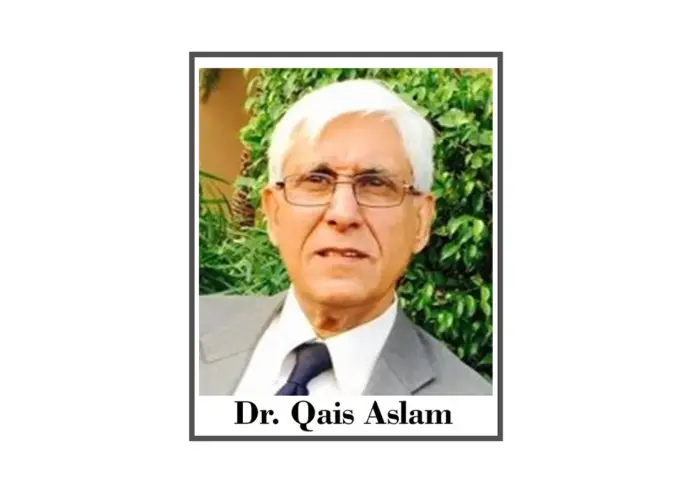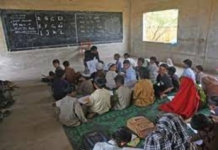In 1972 at Stockholm UN Conference on Human Environment, it was for the first time in human history, it was recognized that the natural resources of the world were not indestructible, and that human intervention was causing global environmental destruction and degradation, irrespective of whether individual nations had ‘clean’ industrial approach to economic development or were industrializing rapidly at the cost of the natural and human environment. Principle 1 of Stockholm declaration 1972 read, ” In the long and tortuous evolution of the human race on this planet a stage has been reached when, through the rapid acceleration of science and technology, man has acquired the power to transform his environment in countless ways and on an unprecedented scale”
Which meant that humans collectively could destroy life on earth in multiple ways or make life on this planet for every individual a life worth living. Many milestones have passed since then, in political terms, in economic terms as well as in environmental terms. The end of the Cold War and the world adapting to one economic system – Capitalism or ‘Free Market’. The WTO that would help globalize the world economies and the countdown to the new Millenium with the advent of the 21st Century. The transformation of cold war military technologies into peaceful and business usages and the cooperation of the world in space, transportation, communication, medicine, robotics as well as information technologies etc., to name a few have opened new opportunities and avenues for individuals and businesses to expand, compete and cooperate in multiple ways. Globalization created its own new challenges and pitfalls added to old ones.
In 2017 UN had introduced the 17 Sustainable Development Goals (SDG’s) for the world to change towards a more sustainable ways of living and working, to be abided by till year 2030, but in 2023 most of these goals seem to be unachievable as quest for larger profits by corporations, population rise in economically and technologically poorer nations and poverty itself, over-use of fossil fuels and therefore environmental degradation of land, air and oceans as well as killing of over 50% of non-human species on the planet since 1970 by humans have created an unsustainable environment – global warming, climate change, melting of ice caps across the globe, increase in plastic pollution in land and oceans, reduction in bee population and other biodiversity is threatening our very existence on the planet. The threat to the environment from climate change, environmental deration, and wars if not seriously mitigated by nations and the world community, then the human on earth can become an endangered species in a couple of centuries. The deadline to SDG’s is 2020 and the world has done little to abide by most of the SDG goals in 2023, seven years less than 2030.
At the same time, the world changed drastically due to Covid-19 pandemic that to-date had over 770.4 million confirmed cases of COVID-19, including almost 7 million deaths worldwide (https://covid19.who.int/) and changed the very way the globe did business and lived. Many businesses did not survive the period of lockdown due to pandemic and many others went online creating different and unique opportunities and pitfalls for the world. This also enhanced the threats of new future diseases and epidemics.
In these 23 years of the 21st Century, human life has changed drastically at the cost of diversity and the environment in many ways. Globalization has had its own challenges. For one thing wars and threats to regional peace have not receded. Kashmir issue and Palestine quest for a statehood as well as many other regional issues between countries have not been resolved. ISIS (Desh) and other extremist organizations have enhanced their global terrorist networks. Russian war on Ukraine has threatened a direct conflict between nuclear NATO and nuclear Russia – threat to the very existence of life on earth. Nuclear piloerection has increased the threat of global destruction where more and more countries are trying to become members of the nuclear club, and where USA and Russia have gone out of their nuclear treaties that were signed and implemented to make the world a more peaceful place. Now Africa is a continent where military Coup’s in at least five countries are threatening a conflict between ‘pro-western democracies’ and the ‘pro-Russian ani-colonization’ military rulers as well as the civil war in Sudan has shattered the Global order in this rich in natural resources but the poorest continent on the planet.
The G-20 or Group of leading 19 nations plus EU contribute 85% of Global GDP and 75% of global trade. This club of leading and emerging global partners at the cost of the poor nations of the world are deciding the pace and direction of world economics and businesses. In 2023, the world economy is in recession mainly due to the rising prices of oil and grain that was due to reduction in output by OPEC Plus Russia, the grain embargo by Russia and the sanctions on Russia due to Ukraine war by the NATO alliance. The Share of G-20 countries and regions in Global GDP in 2022-2023 are: (1) USA – 25.0% (US $ 26.85 trillion). (2) China – 18.5% (US $ 19.4 trillion). (3) EU (The European Union as a group of 27 nations with Germany US $ 4.3 trillion, France US $ 2.9 trillion and Italy US $ 2.17 trillion) – 15.0% (US $ 16.64 trillion collectively). (4) ASEAN (10 nations as a group) – 4.6% (US $ 3.66 trillion collectively). (5) Japan – 3.3 % (US $ 4.4 trillion). (6) India – 3.18% (US $ 3.75 trillion). (7) UK (United Kingdom) – 3.2% (US $ 3.15 trillion). (8) Russia – 3.2% (US $ 2.0 trillion. (9) Brazil – 2.6%. (US $ 2.0 Trillion. (10) Canada 1.2% (US $ 2.0 trillion). (11) South Korea – 2.2%. (US $ 1.72 trillion). (12) Australia 2.0% (US $ 1.7 trillion). etc. (Source: https://www.forbesindia.com/article/explainers/top-10-largest-economies-in-the-world/86159/1).
Global military spendings reached US $ 2.2 trillion in 2022 and total world trade in weapons was US $ 112 billion. Because of the Russian-Ukraine war, Ukraine has become the largest importer of weapons in the world. Apart from Ukraine, the largest importers of weapons in the world (as percent of world trade in weapons) are: (1) India- 11%, (2) Saudi Arabia – 9.6, (3) Qatar – 6.4%, (4) Australia – 4.7%, (5) China – 4.6%, (6) Egypt – 4.5%, (7) South Korea – 3.7%, (8) Pakistan – 3.7%, (9) Japan – 3.5%, and (10) United States of America – 2.7%. ) Source: https://fairbd.net/largest-arms-importers/#Summary_of_the_10_largest_arms_importers_in_the_world).
The top arms exporters with share in global arms export are the USA – (40%), Russia (16%), France (11%), China (5.2%), Germany (4.2%), Italy (3.8%), UK (3.2%), South Korea (2.4%), Israel (2.3%), and others (9.4%)
It should be noted that the five permanent members of the UN Security Council with veto powers are also the top exporters of weapons in the world. According to OXFAM, “Their guns and bombs are not only killing innocent civilians in conflict-torn countries, but starving those who survive”, … “Across the world, ongoing conflict has been the primary driver in pushing 117 million people in 19 countries to extreme hunger last year alone” Source: https://reliefweb.int/report/world/top-five-arms-exporters-hit-yearly-sales-85-billion-9000-people-die-conflict-driven-hunger-every-day#:~:text=The%20top%20five%2Darms%20exporters,billion%20worth%20of%20arms%20yearly)..
On 7 – 9 September 2023 the Joint Statement of ASEAN Conference in Indonesia declared their commitment to regional peace and to promote food security at the face of world food crisis in 2023. On 10 September 2023 the G-20 Sumit in India ended without any reference to Ukraine war as well as a non-agreement on fossil fuel reduction to counter climate change. In both these conferences of the highest leadership order, the presidents of China and Russia did not attend. It should be underlined that,” G-20 members Russia and Saudi Arabia are major oil exporters while coal consumption is rising in China and India, already the world biggest consumers of ‘dirty’ fuel”.
The Economic supremacy of USA and Western Europe (EU and UK) on the global economic system is being challenged by the emerging economics of BRICS – Brazil, Russia, India, China and South Africa (with a collective GDP of US $ 27.6 trillion and 26.3% of world trade) – with inviting six countries – Argentina, Egypt, Iran, Ethiopia, Saudi Arabia and the United Arab Emirates – to become members and to introduce a new BRICS currency that would trade without the dollar challenging USA domination of the world currency exchange and business.
The world, after the devastation of the two world wars, set out to make peace, reduce poverty and inequality, and globalize the world economic system. The main challenge in the new millennium was to fight poverty, hunger, inequality, world debt, technology transfers, issues and climate change. But 23 years into the 21 century old conflicts have not been solved, poverty has not reduced substantially, child mortality, illiteracy, debt crisis conflicts around the globe still plague the ever-rising population. The 500-world richest people own more than 50% of world GDP. The rich nations are becoming richer at the cost of poorer nations that are becoming poorer with ever increasing fear of poverty, regional conflicts, desertification, flooding and population increase etc. The G-20 countries have not agreed on how to tackle global food crisis, global wars and the challenges of climate change, pollution and degradation to name a few. What is the future of humanity has become a question that has not only to be solved by scientists and social scientists alone, but also by politicians and statesmen, industry moguls and businesses around the world. The decade-old question has once again come to light – guns versus food? Time is running out on humanity and there is no Planet B. We collectively must solve this now.







